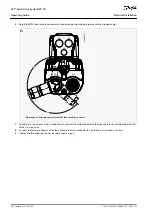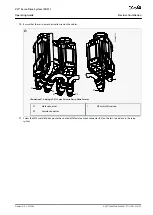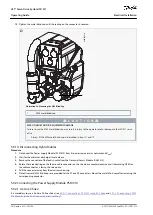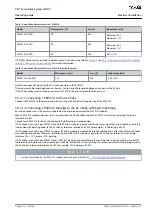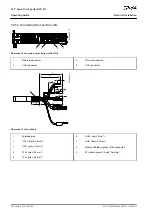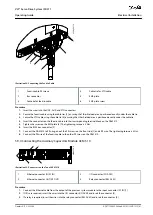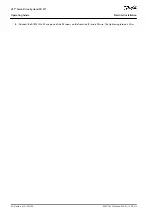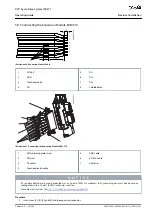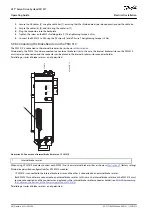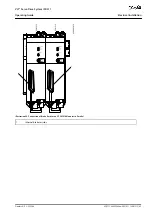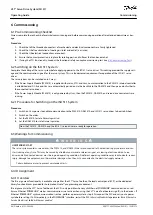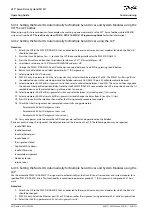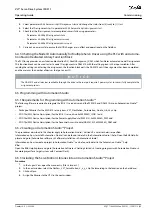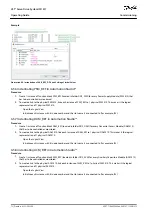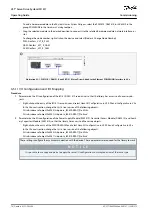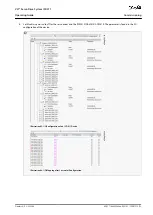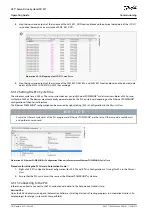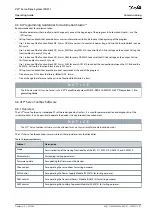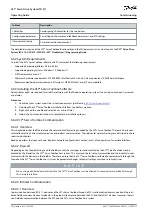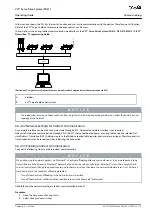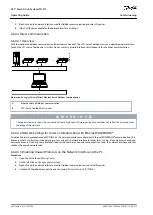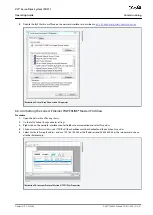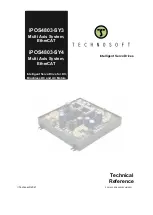
1.
2.
3.
4.
5.
•
•
1.
2.
3.
4.
-
6 Commissioning
6.1 Pre-Commissioning Checklist
Always complete these checks before initial commissioning and before commencing operation after extended downtime or stor-
age.
Procedure
Check that all the threaded connectors of mechanical and electrical components are firmly tightened.
Check that the free circulation of cooling air (inlet and outlet) is assured.
Check that the electrical connections are correct.
Ensure that contact protection is in place for rotating parts and surfaces that can become hot.
If using the STO functionality, conduct the functional safety concept commissioning test (see
6.2 Switching on the ISD 511 System
Complete the cabling of the servo system before applying power to the ISD 511 servo drives. This cabling provides the supply volt-
age and the communication signals for the servo system. This is a fundamental requirement for operation of the ISD 511 servo
drives.
The servo system can be switched on in 2 ways:
If the Power Supply Module (PSM 510) is supplied with mains, STO, and U
AUX
, communication to the PSM 510 internal controller
is established and DC-link and U
AUX
are automatically passed on via the backlink to the DAM 510 and then passed on further to
the connected servo drives.
If the Power Supply Module (PSM 510) is only powered by U
AUX
, then the PSM 510, DAM 510, and servo drive control units are
running.
6.2.1 Procedure for Switching on the ISD 511 System
Procedure
Switch on U
AUX
power to enable communication to the PSM 510, DAM 510, and ISD 511 servo drives to be established.
Switch on the mains.
Set the PSM 510 to state
Normal operation
.
Set the DAM 510 to state
Normal operation
.
Now the PSM 510, DAM 510 and the ISD 511 servo drives are ready for operation.
6.3 Warnings for Commissioning
W A R N I N G
UNINTENDED START
The servo system contains servo drives, the PSM 510, and DAM 510 that are connected to the electrical supply network and can
start running at any time. This may be caused by a fieldbus command, a reference signal, or clearing a fault condition. Servo
drives and all connected devices must be in good operating condition. A deficient operating condition may lead to death, serious
injury, damage to equipment, or other material damage when the unit is connected to the electrical supply network.
Take suitable measures to prevent unintended starts.
6.4 ID Assignment
6.4.1 Overview
The ID assignment functionality is available using either the VLT® Servo Toolbox, the local control panel (LCP), or the dedicated
library function blocks provided for Automation Studio™ programming environment.
ID assignment via the VLT® Servo Toolbox or the LCP is only possible when acyclic Ethernet POWERLINK® communication is used.
Ensure Ethernet POWERLINK® master communication is not active when using the VLT® Servo Toolbox to assign IDs to the devices. If
Ethernet POWERLINK® cyclic communication is active, perform a power cycle to stop it. Disconnect the PLC and carry out a power
cycle before setting IDs. Alternatively, in the POWERLINK® interface, restart the PLC in
ServiceMode
while parameter
Basic Ethernet in
Service Mode
is set to
Basic Ethernet enabled
.
AQ377148425069en-000101
/ 130R1213
66 | Danfoss A/S © 2023.08
Commissioning
VLT® Servo Drive System ISD 511
Operating Guide



